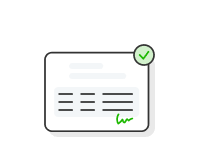Digital tools simplify the interaction between suppliers and retailers. However, if there are too many such tools, it has the opposite effect. Employees duplicate data in different programs and make mistakes. As a result, the supply of goods slows down, and companies lose profits.
Therefore, retailers need to work in a single interface. Integration of digital tools provides such opportunities. We will tell you how it works in EDI in the article.
What is EDI integration?
Modern EDI services integrate with accounting systems (BAS, 1C, etc.). From a technical point of view, integration means that the user downloads an integration module embedded in the configuration of the accounting system. After that, the supplier can process orders and exchange data with the network in the accounting program.
Integration of EDI services offers some advantages to suppliers and networks.
- Saving time. An employee who processes orders in the accounting system does not need to transfer data from the EDI service to the system manually and back to EDI to send it to the retail network. Automation allows suppliers to fulfill orders faster and minimize errors.
- Data control. Thanks to EDI integration, suppliers exchange data with networks in real time. The network employee sees the latest prices and information on the availability of goods in the supplier’s catalogs. To create an order, just click a button in the accounting system.
- Automatic execution of primary documents. For example, to issue an expense invoice in the web version of the EDI service, an employee must check the relevance of the data and manually fill in the fields. In the accounting system with the integration module, all primary documents accompanying the supply of goods are issued automatically.
- Supply chain control. Thanks to EDI integration, suppliers monitor supply chains in real time: they control the order fulfillment status, demand for certain groups of goods, etc. This information allows suppliers to control their inventory effectively and optimize their operations.
Want to get all the EDI integration benefits for your business?
Choose the most convenient integration way
How to integrate an EDI service with an accounting system
EDI providers offer different ways to integrate with accounting systems. Let’s consider them in the example of the Vchasno.EDI service.
Integration via API
The accounting system interacts with the EDI service through standardized requests. The main advantage of this integration method is instant data exchange. For example, as soon as a network employee creates an order in the accounting system, the data is transferred to the EDI service, which sends it to the supplier.
Users can independently integrate the Vchasno.EDI service with the accounting system via the API according to the instructions.
Integration via FTP
The EDI provider’s server exchanges data with the client’s server via files, which are then uploaded to the accounting system. FTP is a universal protocol that can be used to set up integration even with outdated versions of accounting systems.
To set up the Vchasno.EDI integration via FTP you can use the instructions or contact the service support team.
Integration modules for accounting systems
EDI providers develop modules for various configurations of accounting systems (BAS/1C, SAP, etc.). To integrate the module, you just need to download the required version from the provider’s website and add it using the accounting system’s settings.
Vchasno.EDI: integration options
Vchasno.EDI offers its customers the simplest possible integration procedure. To work with EDI through the accounting system, users do not need to install additional programs, databases, etc.
The integrated service allows users to sign primary documents digitally. Users can apply a qualified electronic signature via the web interface.
Vchasno.EDI integration allows you to store documents created in the accounting system in Amazon S3 cloud data centers securely. The servers are located in the European Union and are reliably protected. Documents are stored in the cloud archive for three years. If necessary, they can be saved to a computer or any media.






